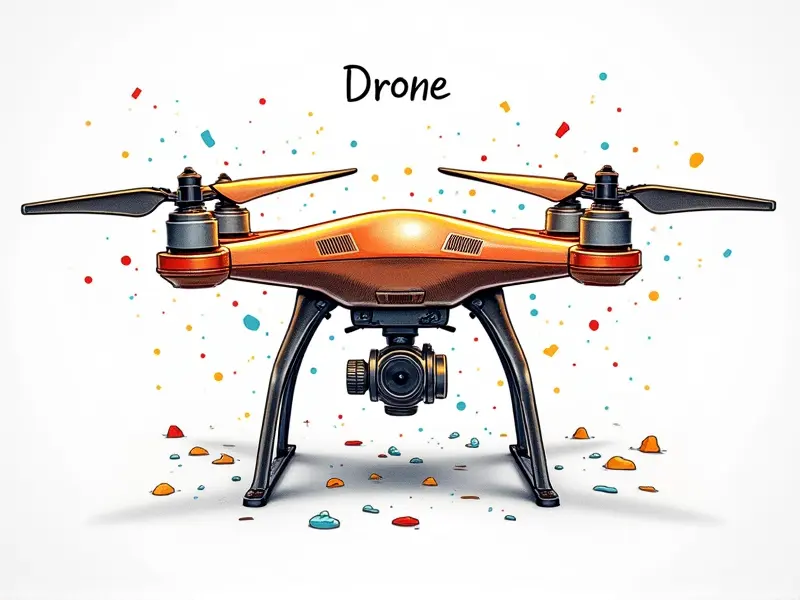Can a drone be autonomous?

Can Drones Really Fly Solo?
The question of whether drones can truly fly solo is one that has intrigued both enthusiasts and experts alike for years. The concept of autonomous flight in drones suggests the possibility of unmanned aerial vehicles (UAVs) operating without direct human intervention, navigating complex environments, and completing missions independently.
Are Drones Truly Autonomous?
The term "autonomous" implies a high level of independence and self-governance. In the context of drones, autonomy means that these devices can perform tasks without constant human oversight or control. However, achieving true autonomy in drones is a complex challenge involving various technological advancements.
How Close Are We to Fully Autonomous Drones?
The journey towards fully autonomous drone technology has seen significant progress over the past decade. Innovations such as advanced AI algorithms and sophisticated sensor systems have brought us closer than ever before to realizing this vision. However, there are still hurdles that must be overcome.
The Reality of Drone Autonomy
While many drones today can perform semi-autonomous tasks like waypoint navigation or basic obstacle avoidance, true autonomy remains elusive. Current drone technology relies heavily on human input for mission planning and real-time adjustments, indicating a gap between current capabilities and the ideal scenario.
Can Drones Operate Without Humans?
The capability of drones to operate without human intervention is a key aspect of their potential as autonomous systems. This involves not only flight operations but also decision-making processes that typically require human intelligence, such as identifying objects or making strategic choices during missions.
What Does It Take for a Drone to Be Autonomous?
To achieve true autonomy, drones must integrate several critical components:
- Sophisticated AI and Machine Learning Algorithms: These enable the drone to learn from its environment, adapt to changing conditions, and make decisions based on real-time data.
- Advanced Sensors and Cameras: High-resolution cameras and LiDAR sensors are crucial for accurate mapping, object detection, and obstacle avoidance.
- Battery Technology: Extended flight times without recharging are essential to support long-duration missions.
- Secure Communication Systems: Reliable communication channels ensure that the drone can receive mission updates or respond to emergency commands from a remote operator if needed.
Challenges in Developing Autonomous Drones
The path to fully autonomous drones is fraught with challenges:
- Data Processing and Storage Capabilities: Real-time processing of large amounts of data requires powerful onboard computing systems, which can be bulky and expensive.
- Navigational Challenges in Complex Environments: Dense urban areas or natural terrains with varying elevations pose significant navigation challenges for autonomous drones.
- Regulatory Frameworks: Current regulations often restrict the use of fully autonomous drones, necessitating a shift towards more permissive guidelines.
- Safety Concerns and Ethical Considerations: Ensuring public safety while deploying autonomous drones in populated areas is paramount. Additionally, ethical issues such as privacy invasion must be addressed.
Advantages of Autonomous RC Drones
The benefits of autonomous remote-controlled (RC) drones are manifold:
- Increased Efficiency and Productivity: Automated missions can save time and resources, allowing for more frequent operations.
- Better Data Collection: Autonomous drones equipped with high-resolution cameras and sensors can gather detailed information over large areas quickly.
- Risk Reduction: By reducing the need for human pilots in hazardous environments, autonomous drones minimize risks to personnel.
- Scalability: Autonomous systems allow for rapid deployment of multiple drones simultaneously, enhancing operational flexibility and coverage.
Is Full Drone Autonomy Possible Now?
The question of whether full drone autonomy is possible now hinges on the definition of "full autonomy." While current technology enables semi-autonomous operations in controlled environments, achieving complete independence across all scenarios remains a future prospect. However, ongoing research and development are rapidly narrowing this gap.
Understanding Drone Autonomy Technology
The underlying technologies driving drone autonomy include:
- Vision-Based Navigation Systems: Using cameras to create real-time maps of the environment for navigation.
- Semantic Segmentation and Object Recognition: Identifying objects in the environment based on machine learning models trained on vast datasets.
- Autonomous Decision-Making Algorithms: Enabling drones to make decisions based on environmental conditions, mission objectives, and safety protocols.
The Future of Autonomous Drones Explained
The future of autonomous drones promises transformative changes in industries ranging from agriculture to disaster response. As technology advances, we can expect:
- Enhanced Autonomy Levels: Continued improvements in AI and sensor technologies will lead to more capable autonomous systems.
- New Regulatory Frameworks: Evolving regulations that support the safe deployment of fully autonomous drones in various settings.
- Innovative Use Cases: Novel applications emerging from the integration of autonomous drones with other technologies like IoT and 5G networks.
- Improved Public Acceptance: As awareness grows about the benefits and safeguards of autonomous drone technology, public acceptance is likely to increase.
Conclusion
The quest for fully autonomous drones represents a significant milestone in technological advancement. While current capabilities demonstrate promising progress, achieving true autonomy involves overcoming substantial technical and regulatory challenges. As research continues to push boundaries, the future looks bright for drone technology that can operate independently and deliver unprecedented benefits across various sectors.

